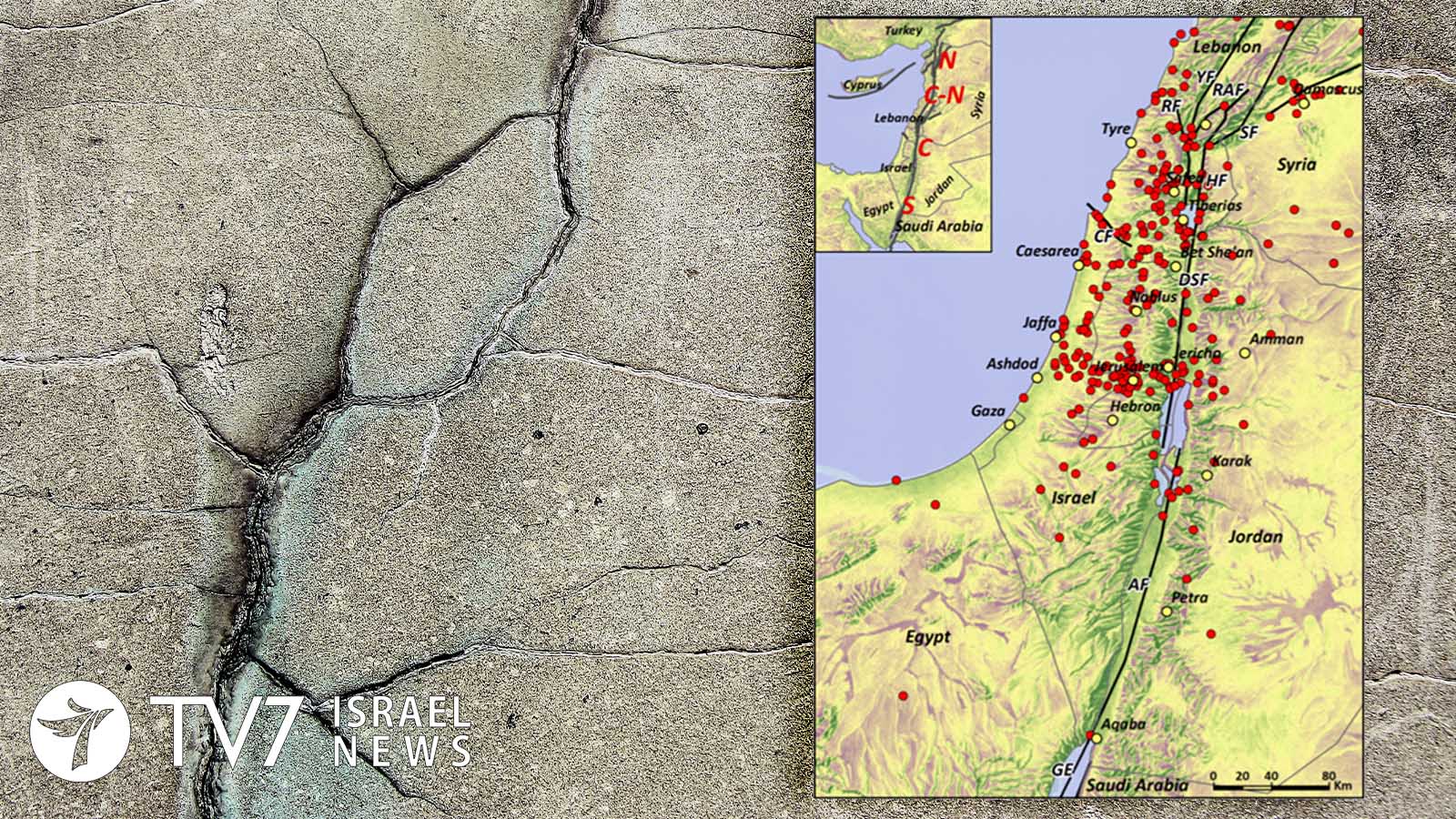Earthquakes in the Middle East have been recorded from the beginning of time by various scholars of ancient literature.
These historical accounts can be difficult to quantify, points out Dr. Amos Salamon, who is a Senior Researcher at the Geological Hazards Division of the Geological Survey of Israel (GSI).
According to the GSI website, it has been assigned by the Ministry of Energy to perform studies and surveys to reduce earthquake risk to the State of Israel. In that capacity, the Seismology Division initiates R & D projects in many fields of seismology for better understanding the earthquake phenomena in our region and their possible consequences. Seismological services in Israel include site effect surveying – how seismic amplification will affect specific local sites; consultancy on national construction regulations with respect to seismological hazards; and construction of National Seismological Networks. The Seismology Division is also charged with evaluating seismic hazards in Israel, such as estimating the expected ground motions generated by local and regional earthquakes; management of the seismic network including documentation, recording and storage of data; preparation of a Seismological Bulletin; identification of seismogenic zones and estimation of their rate of seismicity; and preparation of earthquake scenarios. Another division at the geological survey is that of geological hazards, complementary to the seismological division.
As a scientist, Dr. Salamon’s interests are Earthquake hazard evaluation, Tsunami, Historical earthquakes in the Levant and Seismotectonics of the Eastern Mediterranean. His main projects and grants relate to Tsunami inundation hazard maps for Israel and Tsunami early warning.
In an exclusive interview with TV7, Dr. Salamon said that it is important to differentiate between qualitative accounts of historical reports that needs deep interpretation and quantitative data accumulated by modern seismographs that can be mapped and analyzed more accurately. This means that while minor quakes are not infrequent, “destructive events” that cause damage only occur in Israel every 60-100 years. The last minor surges both occurred in the Galilee region, in 2018 and 2013.
The tectonic plates around the globe remains in constant motion, although Israel is fortunate to be located in a small region with a relatively slow rate. In geological terms, Israel is situated on what is known as the Sinai Sub-Plate– which shifts about half-centimeter each year in relation with Jordan, Syria and Saudi Arabia, which are placed on the adjacent Arabian Plate.
In very simplified terms, an earthquake can result from the ensuing friction and stress create seismic waves along those fault lines. The severity of an ensuing quake is determined by the relative speed of such motion. Earthquakes are focused on the contact between these plates – which is called the Dead Sea Rift valley, or the Syrian-African Fault line in popular terms.
In contrast, the rate of relative motion along the North Anatolian Fault – which is a long plate border in Turkey that crosses nearby Istanbul, is 5 times higher than that of the Dead Sea Fault between Israel and Jordan. Indeed, Turkey suffers many more destructive earthquakes that the Levantine region.
Cyprus also shifts some 2 centimeters per year, at a rate 3-4 times above Israel.
Advanced nations such as Israel are unwilling to take risks associated with what can be devastating effects of earthquakes, and devote tremendous resources to research and scientific monitoring of seismic activity. Strict building codes are also enforced in these countries, often based on policies set in Europe or the United States, to design infrastructure and other structures able to withstand the tremors. It logically follows that less modern states or rural areas that fail to adhere to such guidelines are more vulnerable to damage.
“An earthquake in San Francisco would cause far less damage than one of the same magnitude in Istanbul or Cairo,” commented Dr. Salamon.
Earthquakes are one of the causes of tsunamis, in addition to volcanic eruptions or other major underwater disturbances such as detonations or meteors. The displacement of a large volume of water in oceans or seas can be devastating, as witnessed in the 26 December 2004 earthquake and tsunami in the Indian Ocean.
When asked about the likelihood of tsunamis, Dr. Salamon told TV7 that “yes, of course Israel is at risk, but not as high as that of Japan.”
While there were no recorded earthquakes in Israel this past week, there were multiple instances of various magnitudes throughout Central Asia. According to the Seismic Monitor of the Incorporated Research Institutions for Seismology (IRIS), they include:
6 August: 4.7 in Southern Iran at 10:17 PM.
5 August: 4.9 in Tajikistan at 8:18 AM.
4 August: Turkey was repeatedly rocked by a 5.6 at 9:37 AM, a 4.0 at 1:10 PM, a 4.3 at 3:31 PM and a 4.5 at 6:40 PM. The Hindu Kush region of Afghanistan was hit by a 4.4. at 5:59 PM.
3 August: There was a 4.6 in Southern Iran at 11.37 AM and a 4.4 at 12.35 PM. A 4.2 struck the Hindu Kush region of Afghanistan at 11:24 AM.
1 August: Just after midnight at 00:11 there was a 4.2 in the Afghanistan-Tajikistan border region, and the Hindu Kush region of Afghanistan had a 4.5 at 6:31 AM. There was a 4.4 in Southern Iran at 2:24 AM. Crete was hit by a 4.1 at 3:43 AM and again by a 4.3 at 6:47 AM.
— By Erin Viner, with many thanks to Dr. Amos Salamon.
